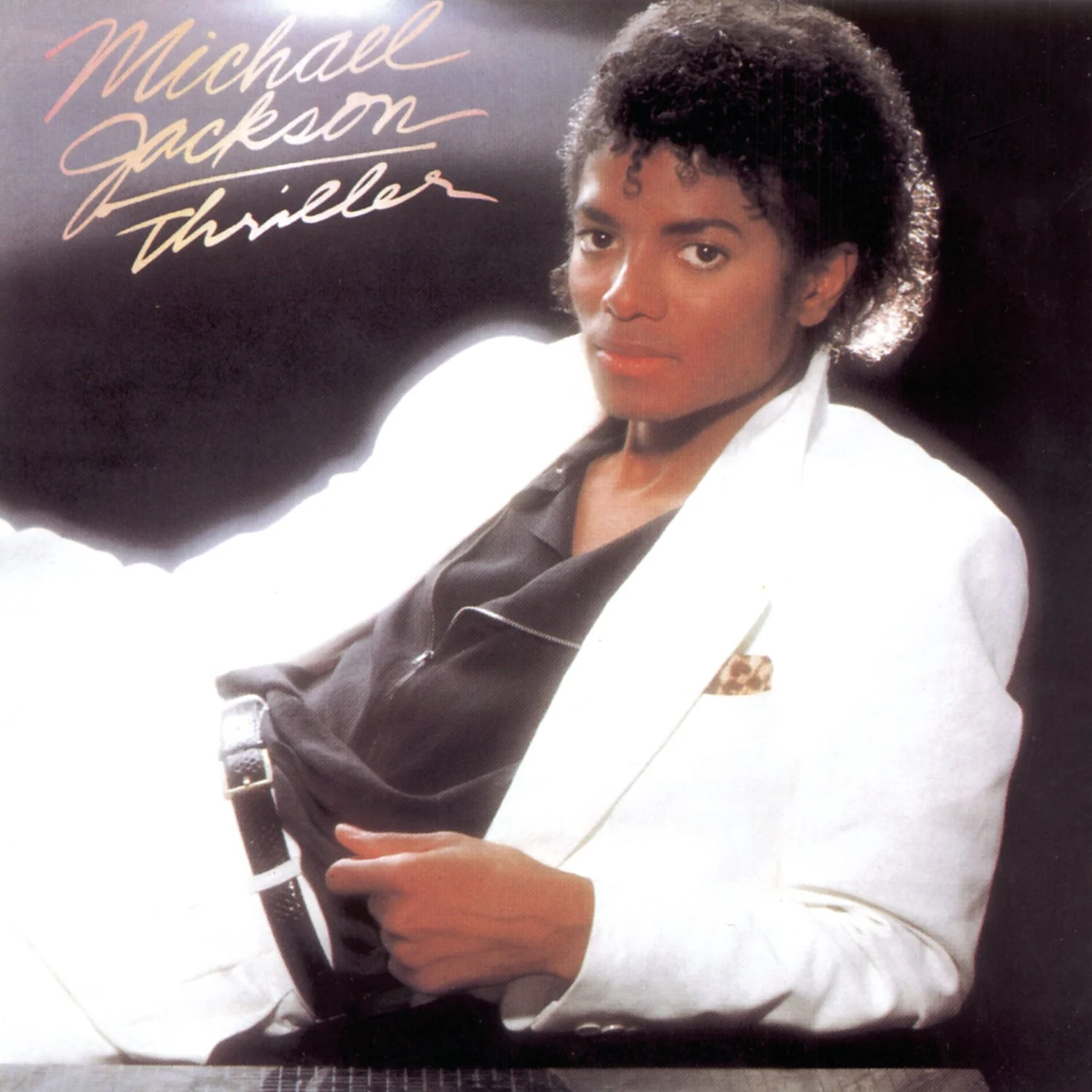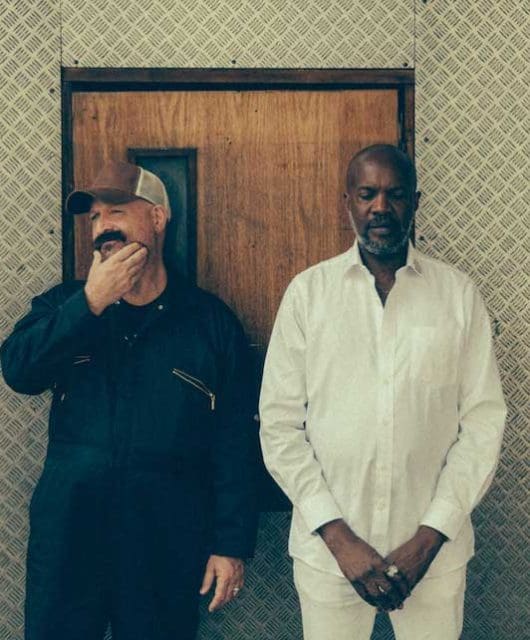Making Michael Jackson: Thriller
By Felix Rowe | March 28, 2022

Thriller by Michael Jackson is one of the biggest albums of all time and for good reason. A masterclass in execution from the King of Pop that set an impossibly high bar for what an album and music video could be. By Felix Rowe
Thriller is not just a classic album; it is the classic album. The archetype by which all else is measured. Totally fresh but absolutely timeless, its release was a cultural event that captured the world’s collective imagination in much the same way that the moon landings did. That might sound a stretch, but just think about it.
Transcending far beyond the music itself, Thriller permeated all aspects of life from fashion to politics, even helping to break down social barriers that had continued to segregate American society. Its unprecedented cultural and historical significance earned it a place in both the Library of Congress’ National Recording Registry and the US National Film Registry.
Thriller is the biggest-selling studio album ever, a feat that will never be bettered. Within a year, it had shifted a staggering 32 million units, and has gone on to sell anywhere from 70 to 110 million in total. It hogged the top spot of the US album charts for almost nine months. And one can only imagine how many red leather jackets were sold in the mid 1980s.
Of course, just because something sells by the bucket load, doesn’t mean it’s any good. But Thriller is the embodiment of both style and substance; instantly accessible pop destined for the radio that oozes credibility. It scooped a record-breaking eight Grammy awards and it produced the most top ten singles of any studio album ever (seven to be exact).
That last particular feat is even more remarkable when you consider that Thriller is a lean collection, containing just nine tracks. But what a nine tracks! Practically every inclusion is a stone cold classic in its own right: Thriller, Billie Jean, Beat It, Human Nature... it reads like a greatest hits.
There’s no room for stodge and that was done by design. From the outset, Jackson was adamant that each song “had to be killer”. Okay, if there’s a law stating that every classic album must contain one dud, then The Girl Is Mine ably fulfils that role. But that’s just nitpicking.
While it might appear to have been beamed down complete from a higher place, Thriller clearly draws upon the wider musical narrative. Its freshness doesn’t alter the fact that Thriller not only takes influence, but borrows liberally from its contemporaries.
Compare, for example, the bass line of R&B chart No.1 Give It To Me Baby by Rick James (released on Motown the year prior) to the song Thriller. And those powerful synth chords at the opening of that song? Apparently directly inspired by the opening synth brass stabs of 1999 (released as a single just a few months before Michael’s own album came out).
Read more: The story of MTV
Read more: Top Of The Pops in the 80s
It’s hard not to draw comparisons between Thriller and Prince’s breakthrough album, 1999 – there are countless parallels between the two, released within a month of each other. Both broke new ground with funky electro-tinged synth-pop incorporating elements of rock; both furthered black artists among white audiences; and both made the visual aesthetic integral to their artistry.
The Prince/MJ debate rages as fiercely as ‘Beatles versus Stones’, and 1982 was the pivotal year in cementing that comparison.
But Michael Jackson was already an established star by the turn of the 80s. 1978’s Off the Wall had won a Grammy, spawned five hit singles, including the Billboard No.1, Don’t Stop ‘Til You Get Enough, and would eventually go on to shift over 20 million units.Graduation from Motown protégé to independent artist was in full swing.
As groundbreaking as Thriller was, it was a consolidation of power, building on the solid foundation already laid down. Still, the extent of Michael’s ambition was dazzling. He went into Thriller with the primary goal of making himself the biggest, richest and most successful popstar on the planet. Ever.
One way to secure greatness was by association. To be the best you must enlist the best, and Michael was ever-willing to collaborate with those that he admired. With heavyweight producer Quincy Jones back at the helm, Thriller’s credits list includes Toto, countless top session musicians, Grammy winners and a Hollywood movie legend.
MJ really demonstrated his star-pulling power by snagging Paul McCartney to duet on The Girl Is Mine.
On paper, the hook-up was a match made in heaven. That it might help to make Jackson more marketable to the white rock music-buying audience was surely a point not lost on anyone. But while it’s fitting that a Beatle contributed to the biggest album of all time, in reality The Girl Is Mine is the weakest track on offer. Compared to the razor-sharp future pop of Wanna Be Startin’ Somethin’, it’s as cutting edge as a puddle of slosh.
Chosen as the first single to launch the album, it wasn’t the most convincing herald of greatness. Still, it raises a smile and Thriller would be incomplete without it. It’s amusing rather than offensive and if Lennon is up there somewhere, we can only imagine this one gave him an extra chuckle.
In fact, Thriller’s success owes much greater debt to another Englishman: Rod Temperton, born in Lincolnshire, who rose to prominence as the keyboard player and chief songwriter of funk band Heatwave. Temperton had previously penned Rock With You and Off The Wall, and contributed three new cuts to Thriller, including the title track.
Listening to Temperton’s commentary on the 25th anniversary edition, it’s amusingly jarring to hear him, in a very English East Midland burr, discussing how he wrote a track so totally ingrained in American pop culture.
But Michael was growing in sophistication as a songwriter too. Billie Jean broke new ground, and his original home demo (also available on the 25th anniversary edition) shows how fully formed it already was, before Quincy got anywhere near it.
MTV launched in 1981 and Thriller was the perfect record to realise its potential. The first challenge was to break down barriers that hitherto restricted black artists from mainstream rotation. Michael not only overcame this hurdle, but revolutionised the pop video medium, treating each promo like an event – mini movies with budgets to match.
Thriller, Beat It and Billie Jean are inseparable from the visuals that accompany them. Jackson refined the template that he would follow for the rest of his career: music, fashion, dance moves and cutting-edge visuals combined into the MJ multimedia audio-visual experience.
It was Michael’s now-infamous 1983 performance of Billie Jean at the Motown 25 television special concert that introduced the moonwalk to the wider world – or ‘the buzz’ as the move was known back in the 1930s. Indeed, his signature dance move is a classic example of MJ appropriating then popularising a cult trend, assimilating it into his own universe.
Michael was the ultimate musical magpie, taking the best bits of everything else, doing them better than anyone else, and fashioning them into something utterly fresh.
His defining moment, the Thriller zombie romp routine has been aped and parodied a zillion times, notably going viral in 2007, when it was recreated by inmates of a high-security Philippines prison. Re-watching that clip now, it’s an immensely evocative and powerful piece of imagery on so many levels. What greater example of cross-cultural potency?
Thriller’s horror movie pastiche is rightly remembered as a masterclass in theatrics, but it could have ended up a trainwreck in the wrong hands. The whole set-up smacks of cheap novelty like, say, Kung Fu Fighting. The spooky sound effects and voiceover (courtesy of legendary Hollywood horror actor, Vincent Price) are straight out of Scooby Doo. But it serves as the perfect vehicle to showcase the scope of MJ’s ambition and his masterly execution in one
neat package.
Read more: Top TV pop moments
15 of the most surprising band name origins in pop
At the time (back when people still bought physical records), industry execs hailed the album for resuscitating the entire record business. It performed so well that anything below 10 million for the follow-up would have been considered a flop. In the event, Bad hit the top spot in 25 countries and has sold at least 20 million copies (probably many more)… yet it still doesn’t even come close.
An event like Thriller could never really happen again – certainly that many physical units would never be shifted in the streaming age. But more than that, it’s hard to think of any other happening in pop music since that has had such cultural impact. Countless male pop stars have followed in his wake: Timberlake, Usher, The Weeknd, Pharrell, Bieber…
But, individual merits aside, there’s no denying they’ve largely traded on rehashing the Thriller template – slick pop, and slicker choreography and big-shouldered leather jackets. Bizarrely, only the Spice Girls immediately spring to mind in having created a global cultural pop phenomenon so genuinely fresh in its time, with an accompanying sense of mania.
The release of Thriller marks a crossroads in MJ’s personal trajectory. Soon after this career milestone, Michael began his well-publicised real-life physical transformation. By the time he returned for 1987’s Bad, he looked notably different and each new alteration in appearance became increasingly identified with a troubled soul.
As early as 1981, Freddie Mercury called a halt on recording sessions with Michael, displeased at having to share the studio with MJ’s pet llama. While he actively nurtured a sense of mystique, Thriller’s aftermath marked the turning point where his lifestyle overshadowed his artistic output.
With each new revelation, it becomes increasingly impossible to separate the music from the man from the myth. We may never rescue the full truth from the web of sensationalism that surrounds him.
Yet focusing purely on the art, just watch any of Thriller’s promos and the overriding feeling is that you’re witnessing something truly special, incredibly rare – unique even, like walking on the moon. What really makes Thriller untouchable to this day is its completeness. It’s the entire package; a feast for all the senses that must be appreciated holistically.
The songs are incredible – truly, staggeringly incredible – but it’s the artwork, the signature dance moves, the videos, the fashion, all the associated stylistic trappings that come together in harmony; not simply embellishment but integral components of the wider whole.
With Thriller, Michael Jackson shook off the tag of Motown child star to adopt the King of Pop persona. Staggeringly forward-thinking, Thriller simultaneously confirmed Michael Jackson as a classic stage entertainer of the old school tradition – the full singing, dancing package who had audiences hanging on his every move.
Its cultural significance cannot be overstated. In the words of veteran producer Quincy Jones: “a young black kid to be the idol of so many millions of kids all over the world, that’d never really happened before.”
Thriller sets the bar for what a pop album, a pop single, and a pop video can be. It didn’t invent any of these artforms, but it mastered them so utterly and totally and completely. And to think the song itself wasn’t even going to be a single.
Read more: Top 40 synth-pop songs
Read more: The Lowdown – Michael Jackson
Michael Jackson: Thriller – the songs
Wanna Be Startin’ Somethin’
The tone is set with sleek electro future-pop, with syncopated bass locked in to a choppy LM-1 drum machine. All the classic Jackson tropes are there – the horn stabs, the primal screaming. It has been covered and sampled multiple times, notably most recently by Rihanna. The lyrics reference Billie Jean, and, yes, apparently MJ really is singing “You’re a vegetable.” Who else could sing a line like that with such conviction? Absolute class and a bold statement of intent.
Baby Be Mine
Rubbery basslines, slinky guitars, horn stabs, and futuristic synth parts interweave between one another in a perfectly choreographed dance. Although a busy arrangement, the clever interplay allows each instrument its space, without overcrowding the other. It’s another precision pop song, so controlled in its grooves, giving MJ a solid foundation to dance all over.
The Girl Is Mine
Cheesier than a weekend in Wensleydale, and with a spoken section that’ll make your toes curl, this mid-tempo plod-along is at least a counterpoint to the taut pop opening the record. Though Macca had no hand in the writing, his character is all over it, and he admirably holds his own vocally. Sure it’s fun, but let’s be honest, it won’t be remembered as either party’s finest work. Ironically, it wasn’t a girl but The Beatles’ publishing rights that they would fight so bitterly over.
Thriller
Or ‘Starlight’ as it might have been called, the title track was written by Rod Temperton specifically for Michael to perform and they settled on ‘Thriller’ for the main hook. From there, its spooky concept evolved into the juggernaut it is. Featuring legendary horror actor Vincent Price on the voiceover, Temperton wrote the words to Price’s section in the taxi on the way to the studio. It’s the album’s seventh single, and the label needed persuading to put it out!
Beat It
Quincy felt the record needed a big rock track like My Sharona, so MJ pulled this one out the bag. Muscular and precise, it’s the perfect rock crossover hit. Who hasn’t played bedroom air guitar along to Eddie Van Halen’s legendary solo? When Quincy first rang Van Halen, he thought it was a prank. Thankfully they convinced him in order to lay down this iconic face-melter. It won Michael the rock fans, and he explored the territory further on later records.
Billie Jean
Pure class and an exercise in restraint, Billie Jean confirmed MJ as the full package: a sophisticated and subtle songwriter. Taking the simple drum groove of Hall & Oates’ I Can’t Go For That as a foundation, key to its majesty is its simplicity and starkness. There’s no clutter, leaving those ice-cold synths exposed to work their magic. Its commercial appeal is strangely at odds with the paranoid tension of the lyrics, but somehow it works.
Human Nature
Co-written by Toto’s Steve Porcaro and performed by the group, cue plenty of cascading synth pads and slinky yacht rock guitars. Human Nature shares the same arm-waving cod pan-humanism as Toto’s totem hit, Africa. This is the obligatory reflective moment in which MJ asks us all to consider our impact on the world, starting with the individual (Heal The World, Man in the Mirror, Earth Song). Totally saccharine, yes, but when it’s this damn good, you can’t help but be swept along.
P.Y.T. (Pretty Young Thing)
A slick pop number that utilises the chipmunk effect popularised in the early noughties by Kanye West et al (incidentally already used by Prince on 1999). Of all the colossal singles on Thriller, this one never reached the same dizzy heights. Certainly it had some stiff competition from the four preceding tracks, but actually PYT is an R&B pop cracker. It would probably be the best track on most albums produced by mere mortals.
The Lady in My Life
Initially, the album closer sets up to be the most forgettable track on offer – a smooth, silky and serviceable ballad penned by Temperton that seemingly succeeds more as a counterpoint to the dance numbers than on its own merits. But the emotion builds palpably, and Louis Johnson’s groovy bass (spiced up with clever syncopated slap bass accents), coupled with Michael’s trademark ad lib guttural growls and yelps, rescues it from the schmaltz. Boy, could he sing!
Read more: Top 20 Blondie songs





